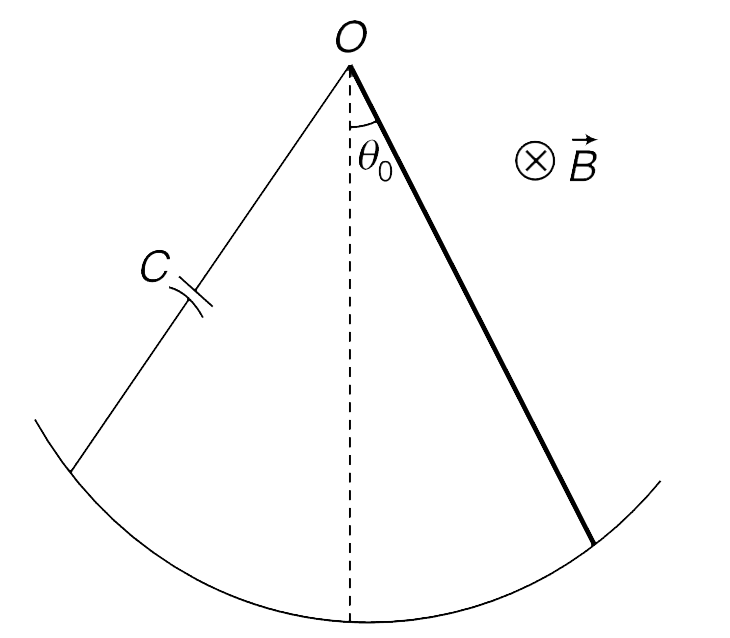Graphite consists of planes of carbon atoms. Between atoms in the planes there are only weak forces. What kind of elastic properties do you expect from graphite ?
Step by step video & image solution for Graphite consists of planes of carbon atoms. Between atoms in the planes there are only weak forces. What kind of elastic properties do you expect from graphite ? by Physics experts to help you in doubts & scoring excellent marks in Class 11 exams.
Updated on:21/07/2023Topper's Solved these Questions
- Mechanical Properties of SolidsBOOK - SL ARORACHAPTER - Mechanical Properties of SolidsEXERCISE - Example
113 Videos
- Mechanical Properties of fluidsBOOK - SL ARORACHAPTER - Mechanical Properties of fluidsEXERCISE - Exercise
459 Videos
- MECHANICSBOOK - SL ARORACHAPTER - MECHANICSEXERCISE - Exercise
341 Videos
Similar Questions
What is the state of hybridisation of carbon atoms in graphite ?
View SolutionA conducting rod of mass M and length L can oscillate like a pendulum in a vertical plane about point O. The lower end of the rod glides smoothly on a circular conducting arc of radius L. The circular arc is connected to point O of the rod through a capacitor of capacitance C. The entire device is kept in a uniform horizontal magnetic field B directed into the plane of the Figure. Disregard resistance of any component. The rod is deflected through a small angle θ0 from vertical position and released at time t = 0.
(a) Write the deflection angle (θ) of the rod as a function of time t.
(b) If the capacitor is replaced with a resistor what kind of motion do you expect? Give qualitative description only.

View Solution
Knowledge Check
Graphite has h.c.p arrangements of carbon atoms and the parallel planes are 3.35Å apart . Determine density of graphite :
A2.46/ccB0.41g/ccC1g/ccD1.41g/ccStatement-1 : In graphite, on increasing the temperature the conductivity decreases along the layers of carbon atoms.
Statement-2 : Graphite cleaves easily, because the force of attraction between the layers is weak van der Wall,s force.AStatement-1 is True, Statement-2 is True, Statement-2 is a correct explanation for Statement-1.BStatement-1 is True, Statement-2 is True, Statement-2 is NOT a correct explanation for Statement-1.CStatement-1 is True, Statement-2 is False.DStatement-1 is False, Statement-2 is True.Consider following statements:
(I): In diamond, each carbon atom is linked tetrahedrally to four other carbon atoms by sp3 bonds.
(II): Graphite has planar hexagonal layers of carbone atoms held together by weak Van der Waals forces.
(III): Silicon exists only in diamonds structure due to its tendacy to form pπ−pπ bonds to itself. In this.AOnly I and II are correctBOnly I is correctCOnly II and III are correctDAll are correct statement
Point out the false statements from the following and rectify them :
(a) The members in a homologous series can be represented by same general formula.
(b) CnH2n is the general formula for the members of alkane familt.
(c) Prefixes n-, iso-, tert-, neo- etc. are used in the IUPAC names of the compounds.
(d) Neohyfrocarbon contains a tertiary carbon atom.
(e) Propane consists of two primary and one secondary carbon atoms.
(f) Chemical properties of compounds are those of the functional groups.
(g) CHO group gets priority over COOH group in writing the IUPAC names of the compounds.
View SolutionConsider following statements :
I: In diamond, each carbon atom by sp3 bonds
II : Graphite has planar hexagonal layers of carbon atoms held together by weak van der Walls forces
III: Silicon exists only in diamond structure due to its tendency to from pπ−pπ bonds to itself. In this:
View SolutionConidier following statements :
I : In diamond, each carbon atom is linked tetrahedrally to four other carbon atoms by sp3 bonds.
II : Graphite has planer hexagonal layers of carbon atoms held together by weak vander Walls forces
III : Silicon exists only in diamond structure due to its tendency to form pp−pp bonds to itself.
In this :
View SolutionPASSAGE-I : Diamond and graphite are two allotropic forms of carbon which are crystalline in nature. They differ physically but chemically they are similar. Diamond is the hardest crystalline form of carbon. In diamond each carbon atom is linked to four other carbon atoms by covalent bonds. In graphite, each carbon atom is linked to three other carbon atoms by covalent bond. Graphite is relatively soft and greasy. It is a good conductor or electricity.
Which of the folowing types of forces bind together the carbon atoms in diamond?
View SolutionIn which of the following structures the pair of starred carbon atoms do not lie in the same plane?
View Solution
